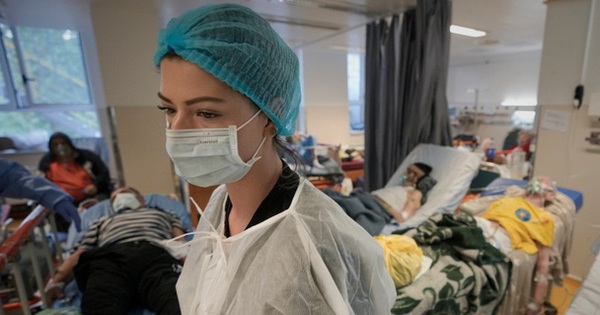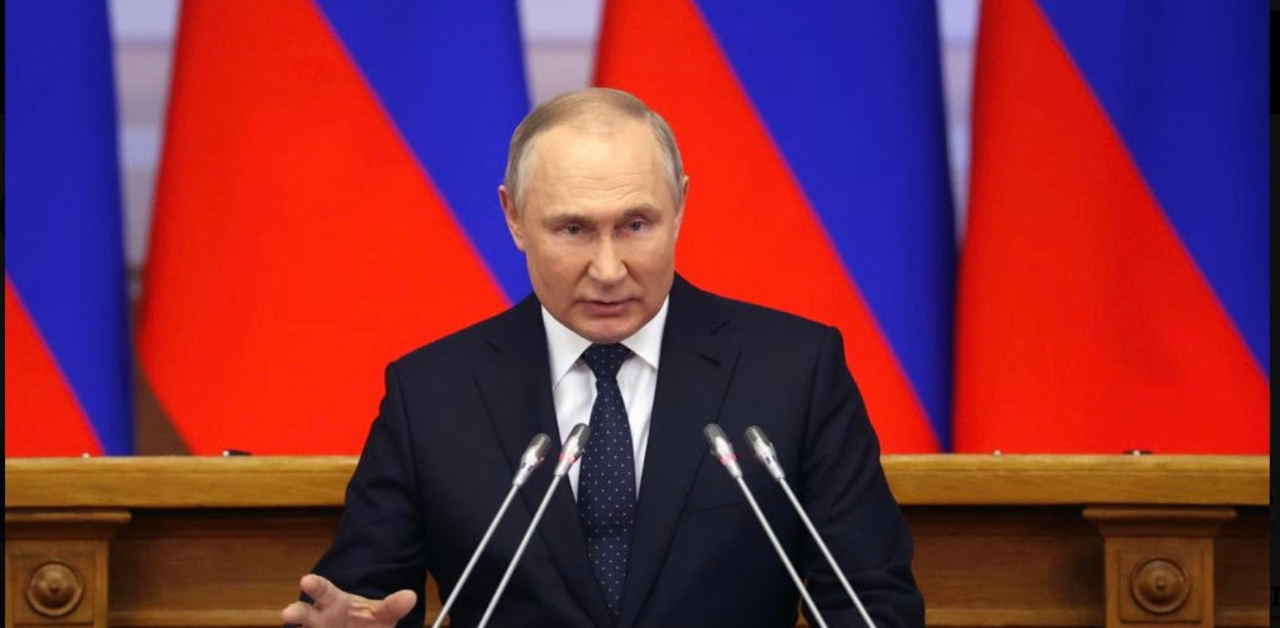Russia announced the withdrawal of its forces near Kiev, opening a new phase in the military campaign in Ukraine, when fierce battles are likely to be concentrated in the east.
Russian armored convoys began leaving the suburbs of Kiev and Chernihiv in northern Ukraine on March 31, after the Russian Defense Ministry announced “decline“Military operations in this area to “strengthen mutual trust and facilitate further negotiations”.
This move by Russian forces helped the Ukrainian military regain control of many areas around Kiev, and raised hopes for a phase of de-escalation in the conflict between the two sides. However, what happened next showed that this was only part of a tactical shift by Russian forces on the Ukrainian battlefield, as forces withdrawing from Kiev were being concentrated in the east of the country.
Serhiy Haidai, the head of the military junta in the Luhansk region of eastern Ukraine, confirmed today that the Russian military “gathered a large number of troops and equipment” in the area, apparently preparing for a major offensive. “They managed to break through Rubizhne last night, but were repulsed,” Haida said. “We are standing strong, but the enemy is gathering a large force.”
Ukrainian President Volodymyr Zelensky on April 2 also said that Russia will increase pressure in the east and south, after reducing activities in the north. “What are the goals of the Russian army? They want to take both the Donbass and southern Ukraine. What are our goals? Defending ourselves, our freedom, our territory and our people,” he said.

Two Ukrainian soldiers stand next to a damaged military vehicle on the outskirts of Kiev on April 2. Photo: NY Times.
“The Russians are adjusting their targets to fit the real situation,” said Lawrence Freedman, emeritus professor of war studies at King’s College London. “They knew the momentum in Kiev was not going well, so they changed their tactics, turned their focus to the Donbass, because that was practically all they could do.”
Igor Strelkov, a former Russian intelligence officer, said that the decision to withdraw forces from Kiev and Chernihov was necessary, because the combat effectiveness at this offensive point was not high, while the threat to Russian troops increased with each passing. day. The weather in Kiev and northern Ukraine is warming, providing vegetation that could be a good hiding place for Ukrainian forces to conduct ambushes and raids.
“If sooner or later you have to withdraw from an area that you can’t hold, it’s best to do that before your forces suffer heavier losses,” Strelkov said. “Russia still needs this force, the war will be long.”
Mykhaylo Podolyak, an adviser to Ukraine’s president, also said that Russia’s move to withdraw troops was aimed at “prioritizing a different tactic”.
“Russia will withdraw from all Ukrainian territories, except the southern and eastern regions,” Podolyak said. “They will set up air defense systems to control the sky, significantly reduce losses and put the terms on the negotiating table.”
Yaroslav Trofimov, chief foreign correspondent of WSJ, said that the decision to shift to eastern Ukraine, focusing on controlling Donbass could allow Russia to focus its fire on a smaller front, shortening supply routes and making air support easier. easier, giving Moscow a better chance militarily. It also made it possible for Russia to encircle some of Ukraine’s most elite units stationed in the east.
Meanwhile, the Ukrainian army is also “free” from the task of defending Kiev and can concentrate its forces on the Donbass front. The West is likely to increase arms and equipment aid to Ukraine to strengthen its defense capabilities in the east.
“This is a recipe for a protracted conflict, when both sides believe they can win, making the chances of reaching an agreement soon through peace negotiations slimmer,” Trofimov wrote.
Many military analysts also suggest that the conflict could drag on for months and even longer, with intense fighting concentrated in major cities in eastern and southern Ukraine.
While negotiators on both sides have made some progress, with Ukraine agreeing to give up its ambitions to join NATO to declare neutrality, Kiev and Moscow have yet to find common ground on the status of the region. the Donbass and the Crimean peninsula.

A military convoy moves on the Mariupol – Donetsk highway in Ukraine on March 23. Photo: Reuters.
The outcome of this war of shrinking scale will depend on the ability of the two sides to replenish their forces and equipment after fierce battles.
At the beginning of the campaign in Ukraine, Russia deployed its most elite units on the northern front, with the goal of quickly taking control of Kiev. However, many of them suffered losses in the face of the resistance of the Ukrainian army, which is equipped with many types of modern Western missiles.
“The Russian forces have a lot of equipment, a lot of armored vehicles, but there is a big problem that there are not many professional soldiers to supplement the units that have suffered losses,” said former defense minister Andriy Zagorodnyuk, adviser to President Zelensky, said.
Zagorodnyuk assessed that the Ukrainian army, with about 200,000 men at the start of the operation, could add a force of a similar size when needed. “If the war drags on, the only question is whether Ukraine will continue to receive support from its Western partners, first of all the US. If we have this aid, we can hold out longer. “, he said.
With these developments on the battlefield, “the conflict in Ukraine is clearly not over anytime soon,” said Peter Dickinson, a veteran analyst with the Atlantic Council in the US.
In the coming weeks, fighting in southern and eastern Ukraine will intensify, alongside peace talks, as both sides seek to use the gains on the battlefield to strengthen their positions. negotiating,” Dickinson said.
Thanh Tam (According to WSJ, NY Times)
at Blogtuan.info – Source: vnexpress.net – Read the original article here



